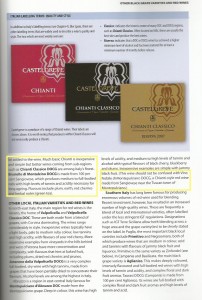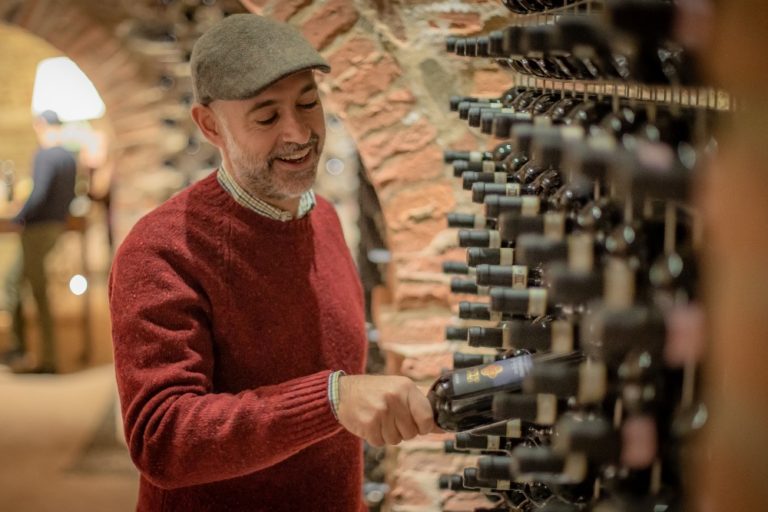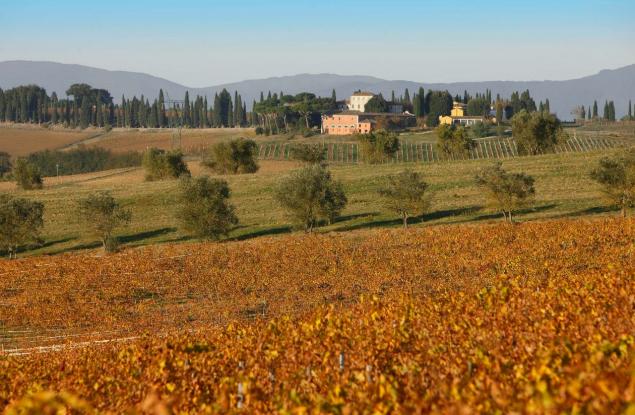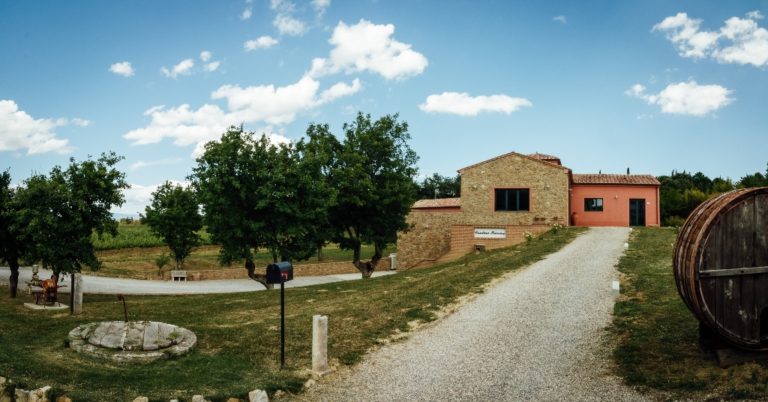The Uphill battle of Vino Nobile

There’s a lot of talk these days about the best way for Italians to promote their wines in the USA. There have been panels at Vinitaly, forays into the role of winery visits, and compelling new data about sales is always surfacing. There are lots of suggestions out there. And many are valid.
This article is specifically concerned with the uphill battle of promoting Vino Nobile di Montepulciano in the USA. The task has its own set of challenges. For example, we have to constantly contend with the fame of neighboring Montalcino. We have to clarify the whole Montepulciano vs. Montepulciano d’Abruzzo thing. And although we are part of the smallest and oldest appellation in Tuscany, its producers as a whole do not play well together, despite the Consorzio’s best intentions at fostering union.
However, if the Bravio delle Botti (an annual local race in which teams push heavy wine barrels up the steep and curvy streets of the town) is any indication, Montepulciano knows a thing or two about uphill battles. From my perspective – as an American living locally, as a winery consultant with experience in both large and small wineries, and as a person dedicated to observation, reflection and change – I know we can make it happen. Below are some suggestions. I look forward to hearing your comments in the section below.
Sangiovese on Wikipedia
For a lot of people in the trade, this will sound offensively elementary. But if an American doesn’t know something – and we have to put ourselves in the consumer’s shoes – Google provides an immediate answer. And since all research begins (for better or worse) with Wikipedia, we should be contributing to the definition of the type of grape that defines us. We need to stake a stronger claim. In the first four paragraphs of the entry devoted to Sangiovese, Brunello is mentioned four times, whereas Vino Nobile is only mentioned once. How can we change this? By stepping up to the plate. Because when it comes to Sangiovese-based wines, whether you are making 100% Sangiovese or 85% Sangiovese, you are still interpreting the grape and its terroir in the name of great wine. And to be fair, many Nobile producers have chosen to make 100% Sangiovese wines; it’s not just happening down the road. So, let’s get up from the back of the bus and take a seat up front, shall we?
WSET Course Level II
 While Italians refer to AIS, the Associazione Italiana Sommeliers, for wine education, Americans have embraced the WSET. A British organization started in 1969, “courses are currently available in 62 countries and 18 languages. In the last academic year (2013/14) 56,215 people took a WSET examination.” It is the Oxbridge-Ivy League of wine education all rolled into one.
While Italians refer to AIS, the Associazione Italiana Sommeliers, for wine education, Americans have embraced the WSET. A British organization started in 1969, “courses are currently available in 62 countries and 18 languages. In the last academic year (2013/14) 56,215 people took a WSET examination.” It is the Oxbridge-Ivy League of wine education all rolled into one.
So, imagine my surprise when, in preparation for my Level II exam, in the very short chapter entitled “Other Black Grape Varieties,” under the heading “Sangiovese” I read this: “One of Italy’s most important wines is Chianti DOCG. Chianti is dominated by the Sangiovese grape variety… Brunello di Montalcino DOCG is made from 100 percent Sangiovese, which produces… .etc etc” No mention of Vino Nobile. At all.
Ah, there it is! Under the paragraph “Other local Italian varieties and red wines.” Under the section devoted to Montepulciano D’Abruzzo – which is in bold face. While Vino Nobile di Montepulciano DOCG, sadly, is not.
Who or what would get the WSET to change their text so that it reflects more fairly on Vino Nobile wines? The right words from the right people? Perhaps. I’m not asking for a section devoted to Vino Nobile. We’d just like to be considered on a par with Chianti and Brunello.
Star tastings
Wouldn’t it be fun to have a blind tasting of wines from Montepulciano, Chianti and Montalcino ? Bring it on, I say. I’m putting my money where my mouth is.
Maps
 I have a fondness for maps. Geographical maps, plans, idea maps. So when I saw Masnaghetti’s new detailed maps of Montepulciano, I felt a tiny bit of justice had been done. But how will these maps be used? How can we use them to our advantage? Let me count the ways: weather-resistant panels in the various sectors, background design for websites, artistic renderings, land art, merchandising, promotional tools for tastings, or as fodder for journalists, who – as I often say to my colleagues – NEED something to write about.
I have a fondness for maps. Geographical maps, plans, idea maps. So when I saw Masnaghetti’s new detailed maps of Montepulciano, I felt a tiny bit of justice had been done. But how will these maps be used? How can we use them to our advantage? Let me count the ways: weather-resistant panels in the various sectors, background design for websites, artistic renderings, land art, merchandising, promotional tools for tastings, or as fodder for journalists, who – as I often say to my colleagues – NEED something to write about.
2gether 4ever
I recently traveled to the USA as a consultant for the winery I now represent. The trip was organized by the Consortium of Vino Nobile and was structured around trade shows in Atlanta, Washington, and Chicago. A total of about 15 wineries took part. Some of them were searching for distributors while others were simply confirming their presence. During the session in Chicago, Paul Wagner, a spokesperson for Balzac Communications who arranged the trip, addressed the producers. He said something that still resonates with me today. “If people visit your winery and ask you what other local wineries to visit, don’t speak badly about each other! Promote each other. Help people understand that your area is a great area for wines by promoting other wineries in the area.”
In all truth, the fabric that unites the producers is torn by jealousy, snobbery, and ego. But the more I get to know the wineries in the area – and for me, this trip was valuable for getting to know the people behind the wines, sharing a beer and a laugh in the evenings, and comparing notes – the more I am convinced that Paul Wagner has a point. It really is true that this is a great area for winemaking and wines. We need to work on this from the inside out.
“Montepulciano,” vs. “Vino Nobile” – Choice of Words
During the trade show in Atlanta I noticed how the Consortium leader, Silvia Loriga, used the words “Vino Nobile” more frequently than the full title of the wine and especially in situations where the town name would have been a more natural choice. Case in point: “Vino Nobile is divided into four main grape-growing areas,” as opposed to “Montepulciano is divided into…” This careful choice of words, like bunch selection in the vineyard, is a smart way of promoting our main wine. She took away the foreign-ness of the word Montepulciano, and made it easier for people to understand, and pronunce. A smart move.
#MontepulciAMO
Recently, there has been a new tendency to use the hashtag #MontepulciAMO. It’s cute. It might work for tourism in the town (especially of Italians) yet it could dilute attention to Vino Nobile. And yet, if this – or any of the suggestions mentioned above – serve to promote our wines, our stories, our terroir, and our labels to customers in the USA, then we will have won at least one of our uphill battles.
(Guest post by Oonagh Stransky: writer, editor, translator of Italian literature, and winery consultant. She lives in Cortona. She can be contacted at oonaghstransky@gmail.com)




